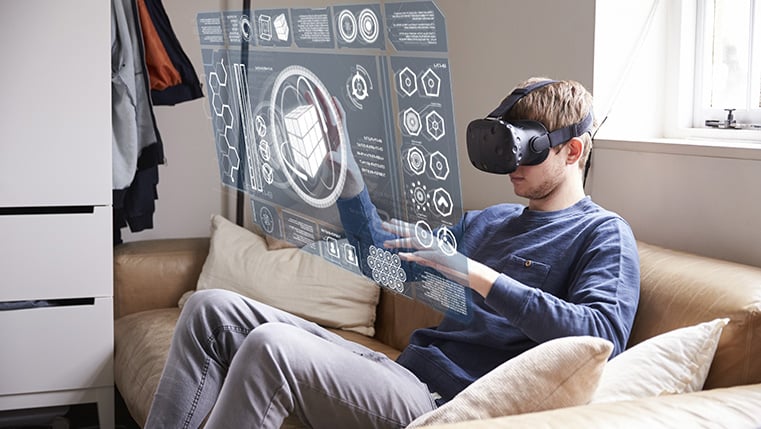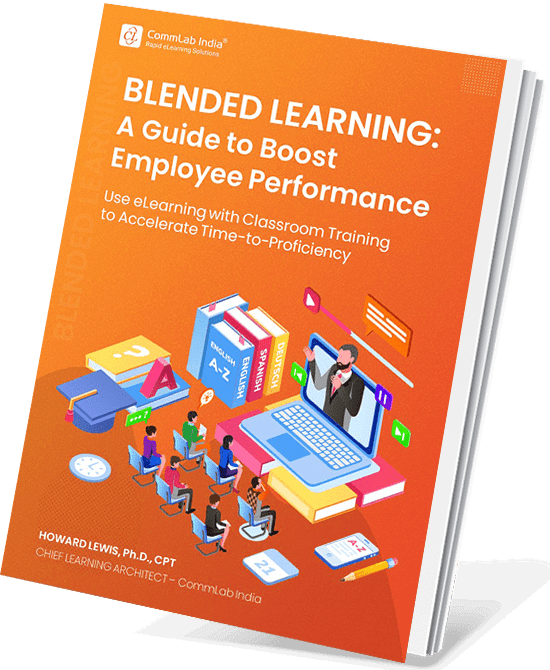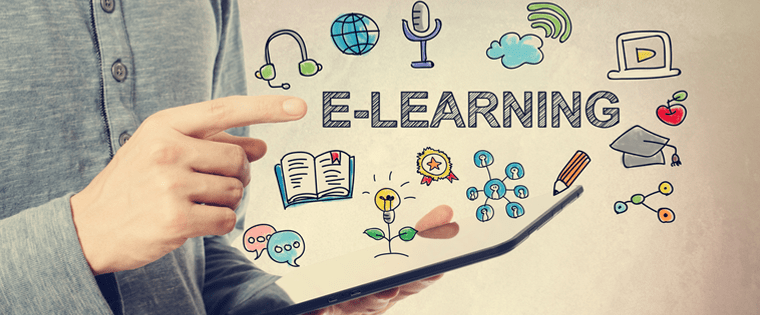Virtual and Augmented Reality : The Future of E-learning

Virtual reality and augmented reality are two popular buzzwords in the e-learning world. I’m sure you might have heard and even looked them up in the Internet. Let me give you a few more insights on these technologies, and how they will impact e-learning in the future.
→ Download Now: Blended Learning — A Guide to Boost Employee Performance [eBook]
What is Virtual Reality (VR)?
Virtual reality or VR is the term for a three dimensional, computer generated environment which a person can explore and interact with. This provides an immersive experience in the sense individuals feel they are part of a 3D world and become engrossed in that virtual world.
A headgear that offers visual and auditory immersion provides the VR experience. In learning, this 3D experience enhances the learning environment.
In a normal 2D learning environment, learners look at the images or at the most, an interactive white board. With VR, they can actually experience the content of the lesson in the classroom or at their desks. As a result, they become immersed in the learning.
VR and E-learning
VR allows learners to directly interact with the learning material. This increases the engagement factor and also the motivation to learn. The use of this technology can appeal to a range of learners.
New learning environments become available with VR, and one can create courses that teach learners how to work in dangerous or high-risk environments, work with hazardous materials, or perform other complex activities.
These settings for engaging learning provide learners the opportunity to examine and evaluate each of their actions, processes or procedures, and prepare them for experiences they may not frequently encounter.
Learners can learn from their mistakes and arrive at the right method; they will have the freedom to try again and again.
Uses of VR
With so much potential, the possibilities of training employees using VR is exciting. The healthcare industry is using this technology in hospitals to help doctors experience complicated medical procedures.
In compliance training, VR is useful especially in safety training, where trainees can experience the consequences of unsafe practices, violation of safety norms, and also learn how to follow safety procedures precisely.
Trainings that require employees to refer to manuals and information sheets such as product training can be made engaging using VR where the employee can virtually experience the product – its assembly, features, and how its parts operate. The VR experience can have a better impact on information retention.
VR is also useful to teach highly skilled trades which require precision and practice. Training using VR means no investment in materials for practice and trainees can repeat the task any number of times till they get it right.

How L&D And Business Can Align to Conquer The Future Of Work
Bridging the Gap Between Organizational and Individual Goals!
- Learning Strategies Shaping the Future
- Changing Role of Learning Professionals
- Learning to Solve Business Challenges
- And More!
What is Augmented Reality (AR)?
Augmented Reality or AR is similar to virtual reality in the sense it provides learners a simulated environment. However in AR, the context or situation the learner is in is taken into account, and relevant information is superimposed on the learning context. The superimposed information has an impact on the visual and auditory fields of the learner, which enhances his sensory experience.
AR goes further than the simulated learning experience VR offers. It brings the real and digital worlds together. It creates an immersive and interactive experience where the learner enjoys a multi-sensory experience. This creates a better learning experience.
With AR, the learner can follow on-screen instructions, view layered graphics, see complex processes, or be given instructions to do a certain task. This makes the training experience more realistic.
AR and E-learning
AR provides training at the point of need. It helps learners perform tasks which they have never done before. Similar to virtual reality, AR can create a safe environment where learners can practice without fear of any harm. This has always been recommended as a better way to learn. With AR, it is possible to create practice environments in the real world. AR also allows learners to collaborate and share their learning experiences. Learners can simultaneously view what others are seeing and interact with them, even if they are not in the same physical location. According to learning experts, this is the most promising potential AR holds for the future of learning.
Uses of AR
AR presents many possibilities for training. In healthcare, it can be used to teach medical practitioners complex medical procedures by actually letting them practice by virtually touching and manipulating objects. In the manufacturing sector, learners can operate heavy machinery in a simulated environment. In both these situations, trainees can use this technology to practice skills without fearing the consequences of a wrong step.
In product service training, AR can be effective to teach employees about each component of complex equipment and give them step-by-step instructions on how to repair them. When a service technician points to a particular part of the machine; he will get information on the part, troubleshooting tips to identify the problem, and exact instructions to solve it.
AR presents an exciting way for the induction training of new employees by providing them an AR version of the top management of the company, a virtual tour of the company premises, and allows them to scan the regulations book with embedded digital content.
Both virtual and augmented reality engage learners and these technologies are poised to become prevalent in the future. The heart of any instruction is learner engagement. As Benjamin Franklin said, “Tell me and I forget. Teach me and I remember. Involve me and I learn.” When the learner is engaged, he becomes more involved in the learning and tries his best to understand.





